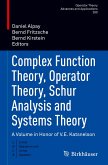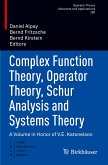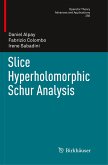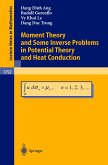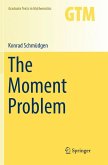The origins of Schur analysis lie in a 1917 article by Issai Schur in which he constructed a numerical sequence to correspond to a holomorphic contractive function on the unit disk. These sequences are now known as Schur parameter sequences. Schur analysis has grown significantly since its beginnings in the early twentieth century and now encompasses a wide variety of problems related to several classes of holomorphic functions and their matricial generalizations. These problems include interpolation and moment problems as well as Schur parametrization of particular classes of contractive or nonnegative Hermitian block matrices.
This book is primarily devoted to topics related to matrix versions of classical interpolation and moment problems. The major themes include Schur analysis of nonnegative Hermitian block Hankel matrices and the construction of Schur-type algorithms. This book also covers a number of recent developments in orthogonal rational matrix functions, matrix-valued Carathéodory functions and maximal weight solutions for particular matricial moment problems on the unit circle.
This book is primarily devoted to topics related to matrix versions of classical interpolation and moment problems. The major themes include Schur analysis of nonnegative Hermitian block Hankel matrices and the construction of Schur-type algorithms. This book also covers a number of recent developments in orthogonal rational matrix functions, matrix-valued Carathéodory functions and maximal weight solutions for particular matricial moment problems on the unit circle.
From the reviews:
"The contributors of this volume are very productive and they have published a large number of papers in many journals and books. ... It may take a while for the reader to get used to it, but once familiar with these habits and the constructs involved, it is good reading. It will be of high interest to anyone who is involved from far or near with Schur analysis and the whole universe of related topics that I sketched in the beginning." (A. Bultheel, The European Mathematical Society, September, 2012)
"The contributors of this volume are very productive and they have published a large number of papers in many journals and books. ... It may take a while for the reader to get used to it, but once familiar with these habits and the constructs involved, it is good reading. It will be of high interest to anyone who is involved from far or near with Schur analysis and the whole universe of related topics that I sketched in the beginning." (A. Bultheel, The European Mathematical Society, September, 2012)


